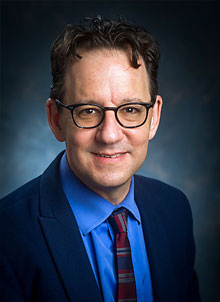Most Overdoses Not Listed in Health Records
Abstract
A diagnosis of substance use disorder in a patient’s health records may be more suggestive of overdose risk than a diagnosis of overdose.
Most nonfatal drug overdoses are not captured in health records, a study in the American Journal on Addictions has found. The results have far-reaching implications for patients who have substance use disorder (SUD) or a history of overdose and for public health.

The low percentage of overdoses captured in health records presents a skewed picture of the overdose crisis and what needs to be done to address it, says Stefan G. Kertesz, M.D., M.Sc.
“For the individual patient, the biggest problem is that there is likely to be no conversation about preventing the next overdose, because the health care provider has no idea that there was a prior overdose,” senior author Stefan G. Kertesz, M.D., M.Sc., told Psychiatric News. He is a professor of medicine at the University of Alabama (UAB) Heersink School of Medicine and a researcher for the Veterans Health Administration. “That means we won’t be helping people find treatment who are at risk of dying without it. It also means we won’t be as quick to offer naloxone to people who might need to be saved by it.”
Kertesz said that the disproportionately low number of overdoses captured in health records presents a skewed picture of both the overdose crisis and what the nation needs to do to address it.
“Public health initiatives and research papers that rely on diagnostic codes are missing most overdoses that actually happen. We can’t fully trust the trends or predictive models offered by such work, because they simply don’t have record of most of the events they wish to understand,” Kertesz said. “For now, every single time you read a research study that includes nonfatal overdoses as an endpoint, you need to understand that that data fail to include most of the overdoses that happened. This means that we can’t entirely derive policy from studies that rely [completely] on these diagnoses.”
Kertesz and a team led by fellow VA investigator Kevin Riggs, M.D., M.P.H., an assistant professor of medicine at UAB, examined data from a national survey of 5,694 veterans who had experienced homelessness, with survey responses collected between April and October of 2018. Participants were asked if they had needed to go to the emergency department or get medical care right away for an overdose at any point over the prior three years. In a prior analysis of the survey responses, 7.4% of the participants reported that they had gotten such care, so for this study the researchers compared the survey responses to the participants’ health records, specifically examining diagnostic codes for overdose and SUD.
The researchers found that a greater proportion of participants had self-reported an overdose than had an overdose diagnosis in their health records. Among those who reported alcohol, opioid, or cocaine overdose, only 28.1%, 12%, and 5.5% had a corresponding overdose diagnosis in their health records, respectively. Yet a far greater percentage had a diagnosis of SUD in their health records: Among those who reported alcohol, opioid, or cocaine overdose, 90.6%, 61.4%, and 87.3% had a corresponding SUD diagnosis, respectively. (Participants whose overdoses involved sedatives were the exception to the findings, as a greater proportion had a diagnosis of sedative overdose than sedative use disorder.) These trends led the researchers to conclude that an SUD diagnosis may be more suggestive of overdose risk than an overdose diagnosis.
With statistics like that, it would seem logical to encourage health professionals to ask their patients whether they have a history of SUD or overdose, but there is a caveat, said Kertesz.
“The best support for such recommendations requires a period of study to assess not only the accuracy of the questions, but whether asking them helps produce a safer patient,” Kertesz said.
With that in mind, health professionals who choose to ask their patients about SUD and overdose should do so with sensitivity, Kertesz said. He recommends opening the discussion in a way that seeks the patient’s permission, such as “I would like to ask you a potentially sensitive question but it’s one I ask because I want to help you with your safety. Is that OK?”
“Once you ask permission, the patient understands that [you] seek a relationship based on mutual respect. Then, and only then, it’s very safe to ask about overdose,” Kertesz said.
This study was funded by the Veterans Administration, Health Services Research and Development Branch. ■



